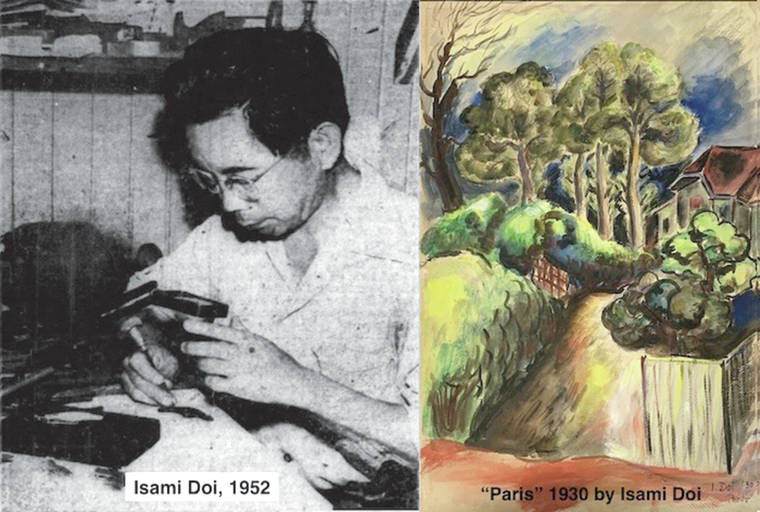Born on O‘ahu, the son of Japanese immigrants who ran a general store, but raised in Kalaheo, Isami Doi (1903-1965) went on to become one of Hawai‘i’s most outstanding and beloved artists.
He was the first artist born in Hawai‘i to achieve worldwide acclaim by creating a lifetime of unique and innovative artwork as a painter in oils and water colors, and as a woodblock printmaker, etcher, lithographer, metal worker and jewelry designer.
His work was exhibited in major regional, national and international shows, and hangs in many private and public collections throughout the world, including The Hawai‘i State Art Museum, the Honolulu Academy of Arts, the Smithsonian American Art Museum, and the University of Michigan Museum of Art.
Doi was also known as the “spiritual father” of many younger, Hawai‘i-born artists who embarked upon their artistic careers following World War II.
Early on, he studied ceramics and design at the University of Hawai‘i under Minnie E. Chipman, and continued to pursue art by studying printmaking, pottery, clay-modeling, industrial design and art history at Columbia University, where he was encouraged by German artist Isaac Webber.
He made his artistic debut in 1926 at an exhibition of the Society of Independent Artists in New York with his oil painting titled, “Nude Meditating.”
Doi chose subdued, grayish-brown and brown colors for paintings in his youth that exude a subtle eroticism, but as he matured, he incorporated symbols derived from Greece, Rome and ancient Egypt.
Later, he moved toward abstractionism with brilliant reds and flaming oranges.
Following his return to Hawai‘i and settling back into his hometown of Kalaheo with his wife Blanche Toyoko Doi in 1958, his subjects once again became the hills and cliffs of Kaua‘i, which he interpreted as spiritual beings.
Longtime University of Hawai‘i teacher and fellow artist Jean Charlot (1898-1979) said of Doi: “A key to Doi’s masterly work is that he belonged. To Hawai‘i, of course, but Hawai‘i includes the skyscrapers of Waikiki and the hotels of Ka‘anapali. He belonged most singularly to Kaua‘i.”





